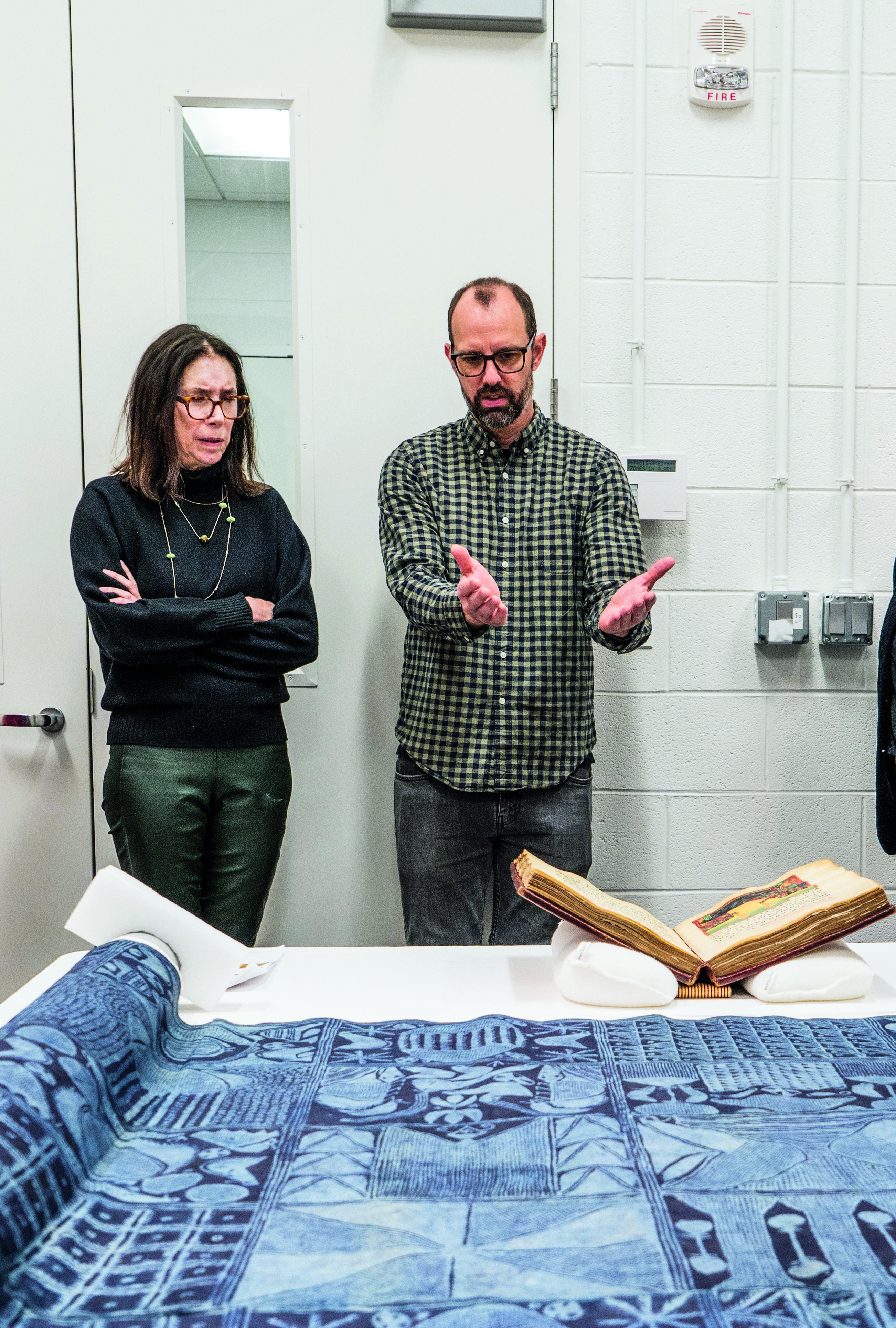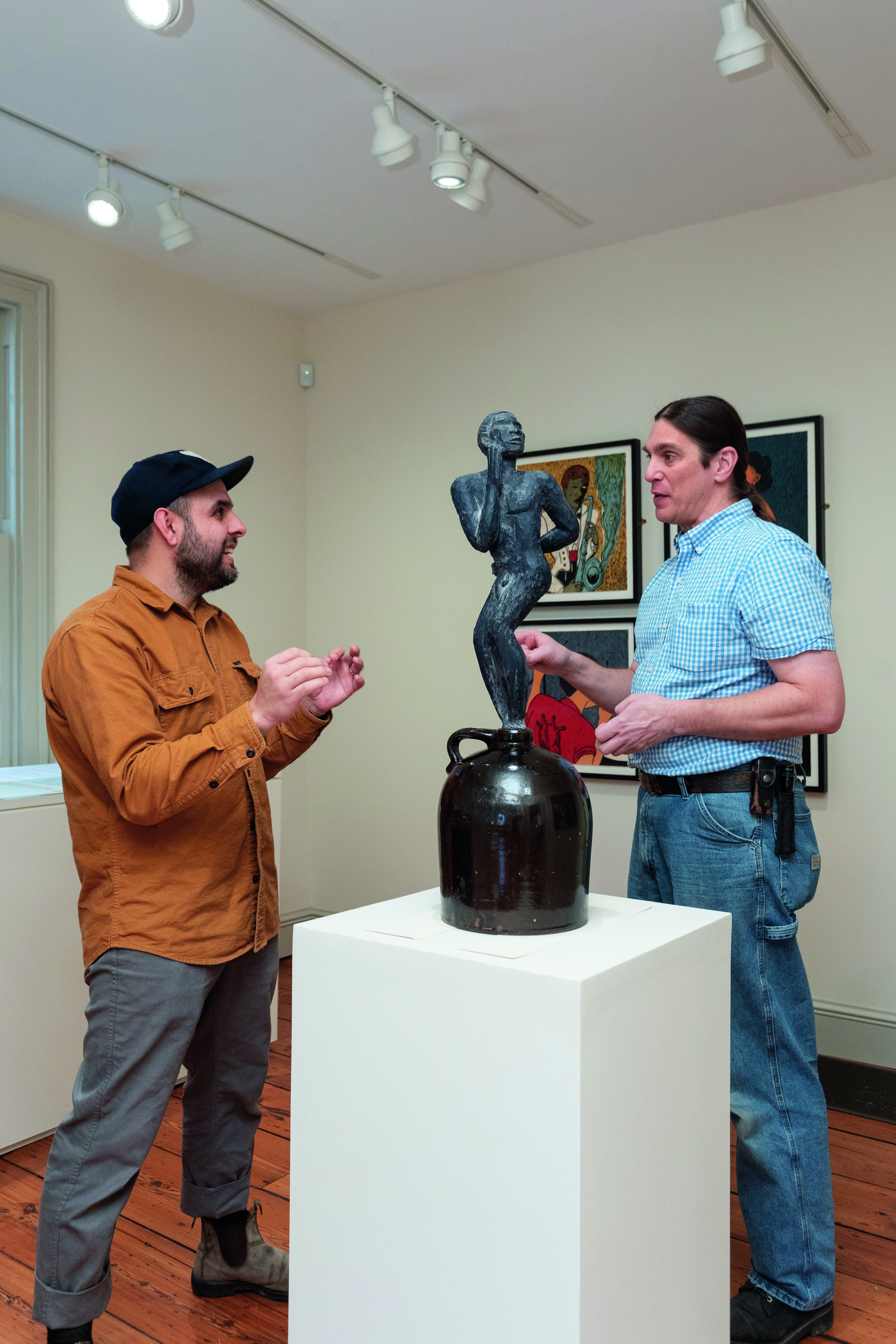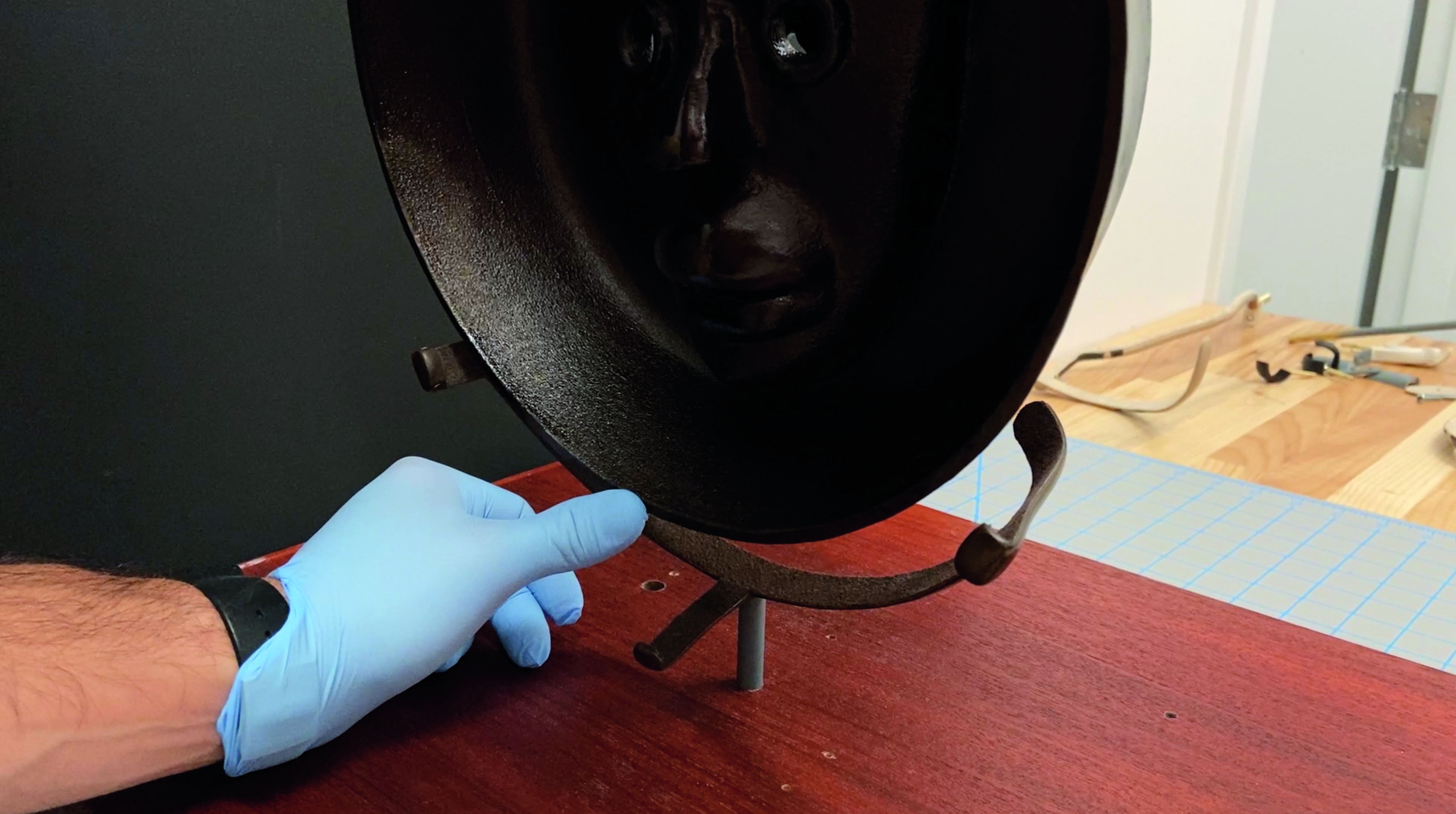Handle with Care: Art Preparators at Work
At the Museum, the preparators—Todd Baldwin, Chris Gorzelnik, Alan Lavery, and Justin Webb—are the people who move, frame, pack, mount, install, and deinstall the precious objects in the collections.
The job is both a responsibility and a privilege. Does it ever faze them—that, say, the blackware ceramic they’re holding, the contemporary art piece they’re packing, or the photograph they’re framing is irreplaceable?
Todd Baldwin at a recent meeting with gallery designers Studio Joseph. Photo: Jeffrey Evans
Not really, is the consensus. This team is used to working with priceless objects. “But I think the cultural heritage of it trumps everything else,” Webb says. “You have to treat each object with a huge level of respect. And you make sure that you ask questions to do things the right way.” “Just do everything carefully,” chimes in Baldwin. Baldwin joined the Museum in 2006 and was promoted last year to manager of exhibition preparation and art handling. He oversees preparators Lavery and Webb, who both started full-time in 2016; the trio, along with Gorzelnik, senior lighting technician, work in the exhibitions services department under Michael Jacobs, senior gallery designer.
Baldwin, Gorzelnik, Lavery, and Webb function as a tight-knit team with a deep well of artistic and technical experience. And, as their colleagues will tell you, nothing at the Museum could happen without them. Each preparator has their own specialty, but as Lavery notes, “everybody knows how to do everything”—they can each cut a mat or pack a work of art safely in a crate. They also all found their way to museum work through training in arts colleges—Lavery at the University of Arizona School of the Arts in Tuscon; Webb at Kendall College of Art and Design in Grand Rapids, Michigan; and Gorzelnik and Baldwin at New Jersey’s Mason Gross School of the Arts at Rutgers University.
Each morning, Baldwin meets with his team to review the day’s tasks: works to pack and ship for loan, exhibitions to install and deinstall, and new acquisitions to safely transport. In his new role, he oversees logistics and manages work requests from registrars, conservators, and curators. Keeping everything on track is “a huge collaboration with other departments,” Baldwin notes. He quips that he “got into museums by mowing grass.” Growing up in New Jersey, he mowed lawns for neighbors—including John L. Goodyear, an artist and the former dean of the Mason Gross School of the Arts, where Baldwin studied and worked in Goodyear’s studio. Baldwin worked for the Michener Art Museum in Doylestown, Pennsylvania, before arriving at the Museum. While working at Princeton, he earned his master’s in fine arts from the Vermont College of Fine Arts through the University’s Staff Educational Assistance Plan. Museum preparator work attracted Baldwin because it paired skills he enjoys, such as woodworking and metalworking, with opportunities to problem-solve. “I just found museums an exhilarating place to be,” he says.
Alan Lavery (left) and Justin Webb install works by Alison Saar for the exhibition Cycle of Creativity: Alison Saar and the Toni Morrison Papers at Art@Bainbridge. © Alison Saar / Courtesy L.A. Louver Gallery Venice, CA. Photos: Joseph Hu
Webb (left) and Chris Gorzelnick install works by Alison Saar.
On an afternoon in April, I joined Gorzelnik for a tour of the preparators’ offices and workshops, located in the Museum’s off-site storage facility. Nearby, artworks are stowed away, quietly awaiting installation in the new building: rows of dazzling oil paintings, terracotta figurines propped in storage drawers, their heads resting on custom-made foam pillows. Many of these objects, Gorzelnik points out, were placed in their temporary homes by a preparator.
With a background in theater, Gorzelnik began working at the University in 1999, lighting productions for venues including Richardson Auditorium and the student-run black box theaters. He often helped the Museum light its exhibitions before being hired as a full-time lighting technician in 2015. “My art is lighting,” Gorzelnik says. He’s known at Princeton for his ability to illuminate any work—a tricky process that requires manipulating angles, balancing shadows, and reckoning with changeable natural light. In other professional news, “He recently learned how to change the sun’s intensity,” Lavery jokes. When Gorzelnik speaks to lighting design students, he tells them that the principles of stage lighting apply just as well to his current job: “Lighting works of art is just like lighting dance, except they’re moving very slowly.”
During my recent visit, the team was busy preparing for Artists in Motion, a traveling exhibition of works from the Henry and Rose Pearlman Foundation now on view at the Museum of Fine Arts, Houston. Webb was in his workshop, a small space equipped with a soldering table and other tools to cut, manipulate, and join metal. He had just crafted a mount for a 1957 bronze cast of Paul Gauguin’s Woman of Martinique (1889): a thin piece of curved brass that wraps around the sculpture’s legs, safely holding it upright without breaking too many visual planes.
Webb, the Museum’s mount-making and packing specialist, earned his MFA in painting at the Pennsylvania Academy of the Fine Arts and has worked in several museums and galleries throughout the Philadelphia region; he also has experience as a movie projectionist and a pandemic-fueled bird photography hobby. For each mount he sends to a venue, he creates a video with careful notes documenting its assembly—be it a slip of foam to support a ceramic pot or a more elaborate ensemble to affix a sculpture to a wall.
Detail of a mount for Hugh Hayden’s To Be Titled 2, 2020. Seasoned cast iron. Princeton University Art Museum. Museum purchase, Fowler McCormick, Class of 1921, Fund, by exchange. © Hugh Hayden. Photo: Justin Webb
In the framing workshop next door, the team had just reframed Vincent van Gogh’s Tarascon Stagecoach (1888) for the Artists in Motion exhibition. Now Lavery and Webb slowly lifted another artwork off the table to reveal their handiwork: Henri de Toulouse-Lautrec’s Messalina (1900–1901), an opera scene newly housed in an ornate frame.
Lavery, who specializes in framing and matting, got his start interning at a frame shop in college. Working for high-end antiques dealers and the Center for Creative Photography in Tuscon, he learned to bind books and paint faux finishes. He recently painted eight tiny magnets to camouflage against Alison Saar’s Reapers (2021), a print on fabric, so the work could be hung safely without obstructing the view of the scene—a feat he was especially proud of.
Framing, like so many of a preparator’s tasks, is an art form in and of itself. Museums tend to opt for methods that complement, but don’t compete with, the art on display. Most of all, Lavery says, “you want to represent the art well and to keep it safe. In a way, the frame works best when it disappears.”
Nora McGreevy
Assistant Editor



